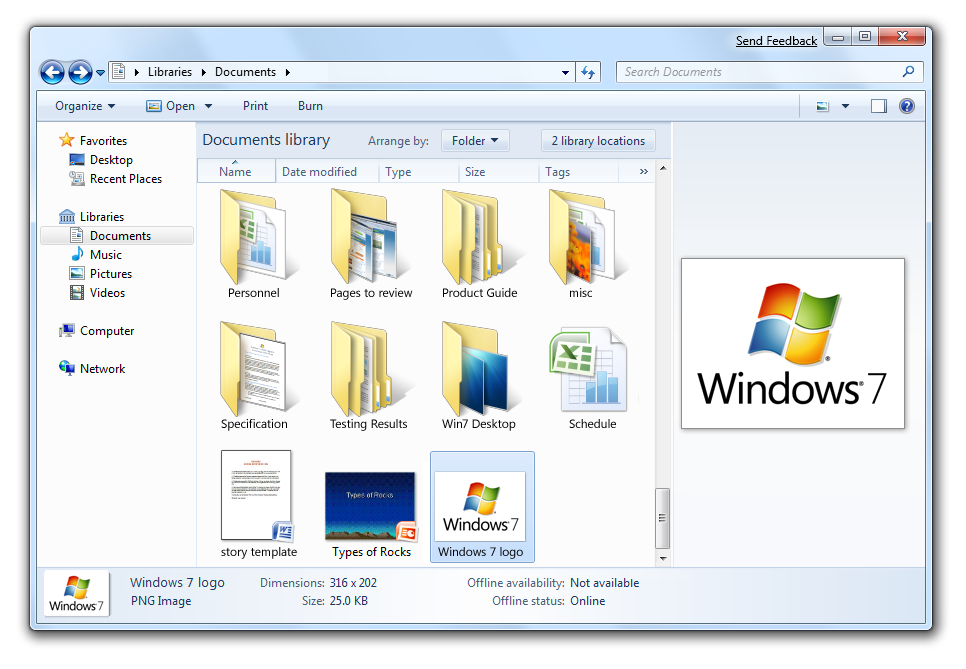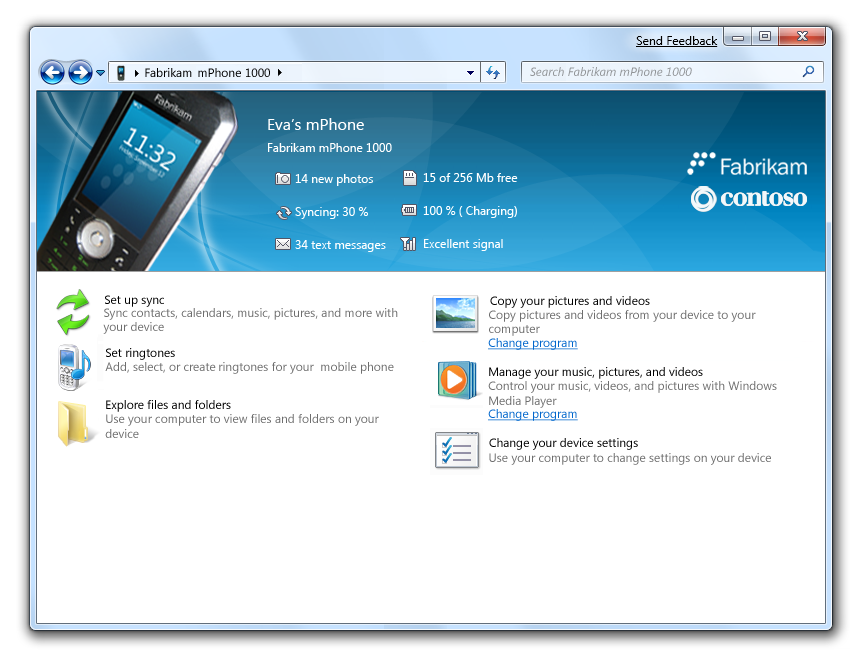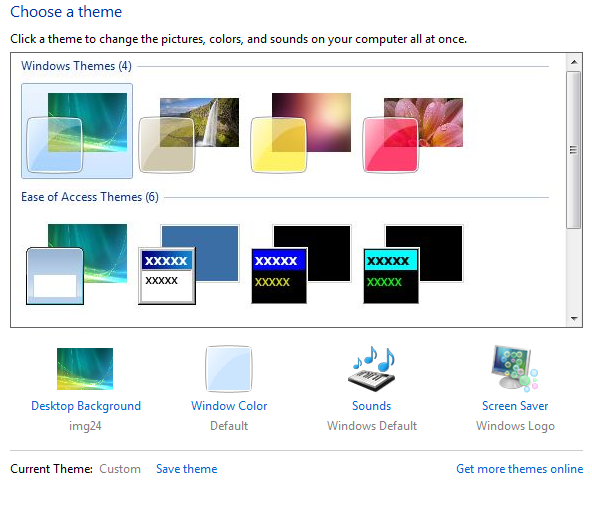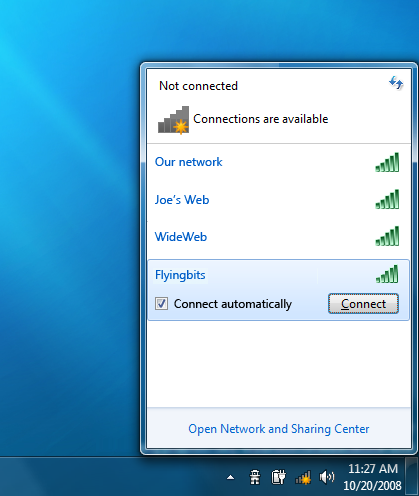Just a few hours ago, Steven Sinofsky, Senior Vice President for Windows and Windows Live Engineering, did his keynote here at PDC2008 unveiling Windows 7 to the world for the first time. Steven asked Julie Larson-Green, Corporate Vice President of the Windows Experience, to come up on stage and demo specific Windows 7 features that I think you’ll find very exciting. I’d like to take a moment and share some notes I took live here from PDC from his keynote about those features that they demoed.
It’s important to note that many of these features that were demoed during the Keynote were from more recent Windows 7 build and didn’t make it into the Windows 7 build being handed out to attendees here at PDC – but we wanted to show them off to you anyway.
Ok now on to my notes on the features demoed here from PDC (not in any specific order)! I also hope to try and add a little more context to the features that were demoed.
I’d like to emphasize all of these features that were demoed ultimately showcases that Windows 7 is being designed to make the things you do today faster and easier, and new things possible.
New Windows Taskbar in Windows 7:
The new Windows Taskbar in Windows 7 focuses on application “tiles”. These application tiles can be arranged or re-arranged anywhere on the Windows Taskbar simply by grabbing the tiles and moving them where ever you want on the taskbar. Users will be able to “pin” applications they use the most to the new Windows Taskbar via the Start Menu by simply dragging and dropping those apps from the Start Menu to the Windows Taskbar.
Another Windows Taskbar feature that was demoed was Live Previews. This lets users quickly see into the application window to see what’s there within the application window. When a user has multiple tabs opened in IE in Windows 7, when they move their mouse over the IE tile on the Windows Task bar – Live Previews will show all the tabs that are opened in IE (as seen in the above screenshot). You can even close tabs via Live Previews on the Windows Taskbar.
When users mouse-over each of the tabs they can “peak” into the each IE tab as it briefly appears on the maximized on screen. Sometimes the Live Preview via the taskbar isn’t enough of a preview.
The idea here is to offer users easier access to their most used applications and applications they have running.
Jump Lists:
Another feature that is also part of both the new Windows Taskbar and also the Start Menu is Jump lists. When you right-click on an application on the new Windows Taskbar in Windows 7 – you get a “Jump List” of options. In the demo, Julie right-clicked on Word and a Jump List appeared showcasing recent documents that have been worked on. If you recall, your recent documents you worked on in Word was usually accessible only inside Word. Jump Lists enable you quick access to options that might be deep within an application.
Here at PDC, we’re talking about how developers can take advantage of API’s that allow them to utilize Jump Lists.
The screenshot above is showcasing a Jump List for Windows Explorer within the Start Menu in Windows 7.
Windows Explorer:
Windows Explorer introduces a new Navigation Pane showcasing easy access to your Libraries and HomegGroup as well as your Desktop and Computer. Libraries allow users to have all their data (documents, music, photos, videos, etc) all in one place. We want network sharing to be much easier in Windows 7. And HomeGroup enable just that. HomeGroup is designed to seamlessly integrate and share computers and devices on your home network. Your HomeGroup is also searchable via Windows Explorer too.
Each Library can have “locations” of folders configured to be included into that Library. Local or network locations can be included in Libraries. In the demo – you could see multiple locations for one “place” or Library. You can add folders from other PCs in your HomeGroup to your Libraries too and they will show up whenever you connect to your HomeGroup.
I have a more in-depth blog post exploring the power of Libraries and HomeGroup in Windows 7 that should be posted shortly – stay tuned.
Searching for files is also easier in Windows 7. Search now includes Filters such as “Type” or “Tags”. When searching for a specific term – matching strings are highlighted. Windows Explorer also enables quick access to enabling the Preview window with an icon in the top right-hand corner of the Windows Explorer toolbar.
There is a consistent Windows Explorer UI across all of Windows 7 including Windows Media Player 12.
Media Streaming:
It just plays. Windows 7 makes it easier to play media on your home network (especially with HomeGroup). No more choices thrown at you when try to play media.
Windows 7 will let you stream any media to computers and devices on your network including Digital Picture Frames.
In Windows Media Player 12, you can play music to a specific device on your home network. When you stream music to a specific device (or “play to” a specific device) – a device player called the Play To player will appear letting you control playing media to that device. All Julie did was right-click on a device in HomeGroup and choose “Play to”. This works for not just songs but also videos and images and also can be utilized in Windows Media Center in Windows 7 too.
Device Stage:
Device Stage is an all-in-one view of a specific device on in your PC’s Printers and Devices Folder – a new folder in Windows 7. 3rd party hardware manufacturers can use Device Stage to give users all the options – or “Tasks” – they need and want to control their device whether it’s a printer or mobile device. The Device Stage experience is also services-enabled feature customizable for 3rd party hardware manufacturers.
In the demo, Julie shows off connected her Motorola phone to Windows 7 and being able to manage that device using Device Stage. Because the Motorola phone is a Plug-and-Play device, the device appears in the taskbar and Device Stage pops up on her screen when she plugged it in to Windows 7. Device Stage is designed to take advantage of mobile devices and offers specific tasks such as syncing media to a device, syncing contacts and calendar events from Outlook to a device, and creating and downloading ring tones. Custom phone makers and carriers can take advantage of Device Stage for their devices.
We’ll have much more to say about Device Stage in Windows 7 next week and WinHEC!
Personalization:
In Windows 7 – your desktop is YOURS. Windows 7 will ship with specific themes users can use for their PCs or customize and create their own. 3rd parties can create custom themes for Windows 7 and let you download them. We’re looking to offer theme downloads straight off of windows.com for users to enjoy.
Julie also demoed the improved abilities to change the color of glass in Windows 7.
Gadgets are now built in to the desktop instead of being confined to a sidebar. You can place them anywhere you want on the desktop or “snap” them to the side like you did previously with Windows Vista’s Windows Sidebar. To add gadgets, people will simply be able to right-click on their desktop to do so.
System Tray Enhancements:
The Windows Taskbar also comes with System Tray enhancements that automatically hide all but a default set of notification icons. Hidden notification icons are put into an “overflow” menu which can be expanded out to view. For notification icons you want on your system tray, Julie shows that you can drag icons from the “overflow” menu to the system tray. If there is a notification icon you don’t want on the System Tray, simply drag it to the desktop and it disappears. Users can also change the order by dragging the notification icons in the order you desire.
The overflow menu has a Notification Icon Control Panel that lets you also manage which notification icons are visible and how they alert you etc.
Wireless Networking:
Directly from the System Tray, Windows 7 introduces a better way of quickly accessing and connecting to wireless networks. Find and discovering available wireless networks is much easier. When new wireless networks are available in Windows 7, the network icon in the System Tray gets a neat little yellow star icon. Users can click the network icon and expand the available networks and choose which one they want to connect too.
Action Center:
Action Center is the central spot for users to troubleshoot issues with their Windows 7 PCs, view reported problems (and report them to Microsoft), run maintenance tasks that can make your Windows 7 PC perform better. Windows Defender is also integrated with Action Center to minimize the amount of alerts users see.
You can also use Action Center to access the UAC Control Panel…
UAC:
Enhancements to UAC put users in control of how UAC communicates with them.
Touch Capabilities:
Windows 7 spots huge investments in Touch capabilities. Julie demos quite a few of these features using a new HP TouchSmart PC. You can read two of my posts on HP’s TouchSmart PC line here and here. She first demos access Jump Lists with touch and also rearranging stuff with touch. She also showcases Gestures which make using touch-capable devices with Windows 7 pretty slick.
Touch in Windows 7 will be incredibly useful especially when browsing through your photos as Julie also demonstrates. She “flicks” through photos using her finger.
With touch and the enhanced Paint that comes with Windows 7 with the Ribbon UI introduced in Office 2007, Julie demonstrates choosing a paint brush and using touch to draw in Paint.
After Julie was done were her demos, Steven Sinofsky came back to stage to discuss a few things such as Software + Services with Windows Live and IE8. I’ll be diving deeper into those topics in later blog posts.
There you have it – a pretty sweet preview of what’s coming with Windows 7. In the future, expect us to continue to talk about Windows 7 and of course look to our new Windows 7 Team Blog for announcements related to Windows 7 including information about the Windows 7 Beta (which Mike Nash talks about here). I’ll also be talking about my Windows 7 experiences too.









